What Nethermind Builds
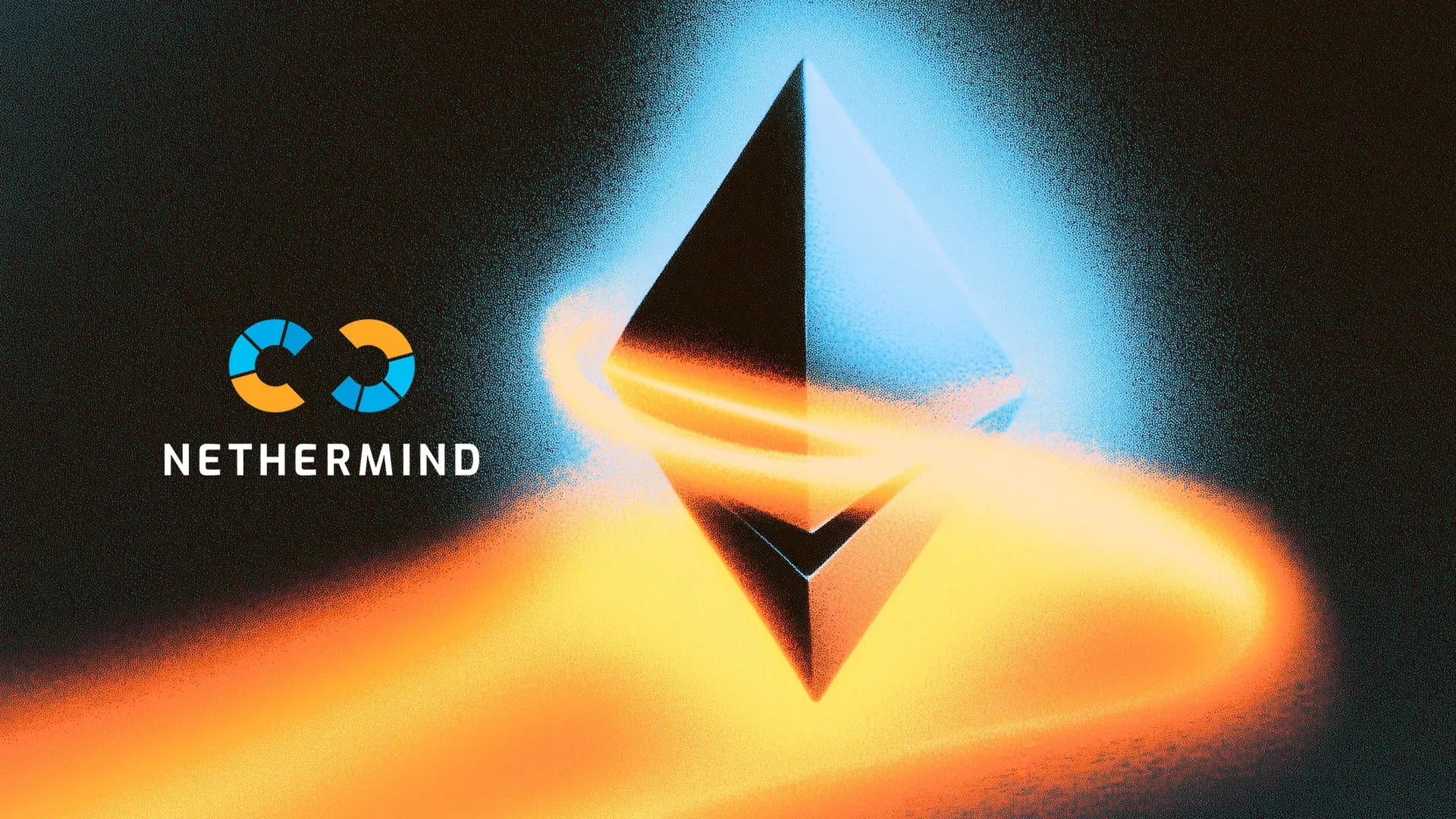
If you've used Ethereum in the last few years, you've relied on Nethermind's infrastructure whether you know it or not.
There’s a running joke in tech about how the internet runs on half-forgotten GitHub repos, kept alive by a few thankless maintainers. Nethermind is sort of Ethereum’s version of that.
Today, we're shining a light on the Ethereum development shop (founded by Ethereum co-ED Tomasz Stańczak) that builds and maintains essential open-source tools that not only keep the network running, but help it decentralize. Their main product, the Nethermind Client, powers over 30% of Ethereum validators, but their contributions to the Ethereum ecosystem go way beyond this product.
Let's take a closer look at what they build 👇
Nethermind's Core Products and Tools
The R&D shop started in 2017, originally as a small team building an Ethereum client (the Nethermind client). In 2018, the Ethereum Foundation awarded them a grant for this work and helped them kickstart broader operations. Since then, Nethermind has grown from a small team into a global company with over 300 employees. As many know, their founder Tomasz Stańczak recently moved on to co-lead the Ethereum Foundation itself. Now, Daniel Celeda, who had been co-CTO since 2021, operates as the company’s CEO.
Beyond offering a suite of development tools, Nethermind plays an essential role in the Ethereum ecosystem, partnering with teams like Lido and Aave to push DeFi advances, and publishing research alongside TradFi players like Deutsche Bank to drive the world computer forward. Nethermind recently announced participation in Lantern Capital, an early-stage fund focused on the intersection of Ethereum, crypto, and AI.
At its heart, Nethermind builds stuff, and while our developer audience may be extremely familiar with a number of tools and resources they've shipped, here's a rundown for the rest of you.
Nethermind Client:
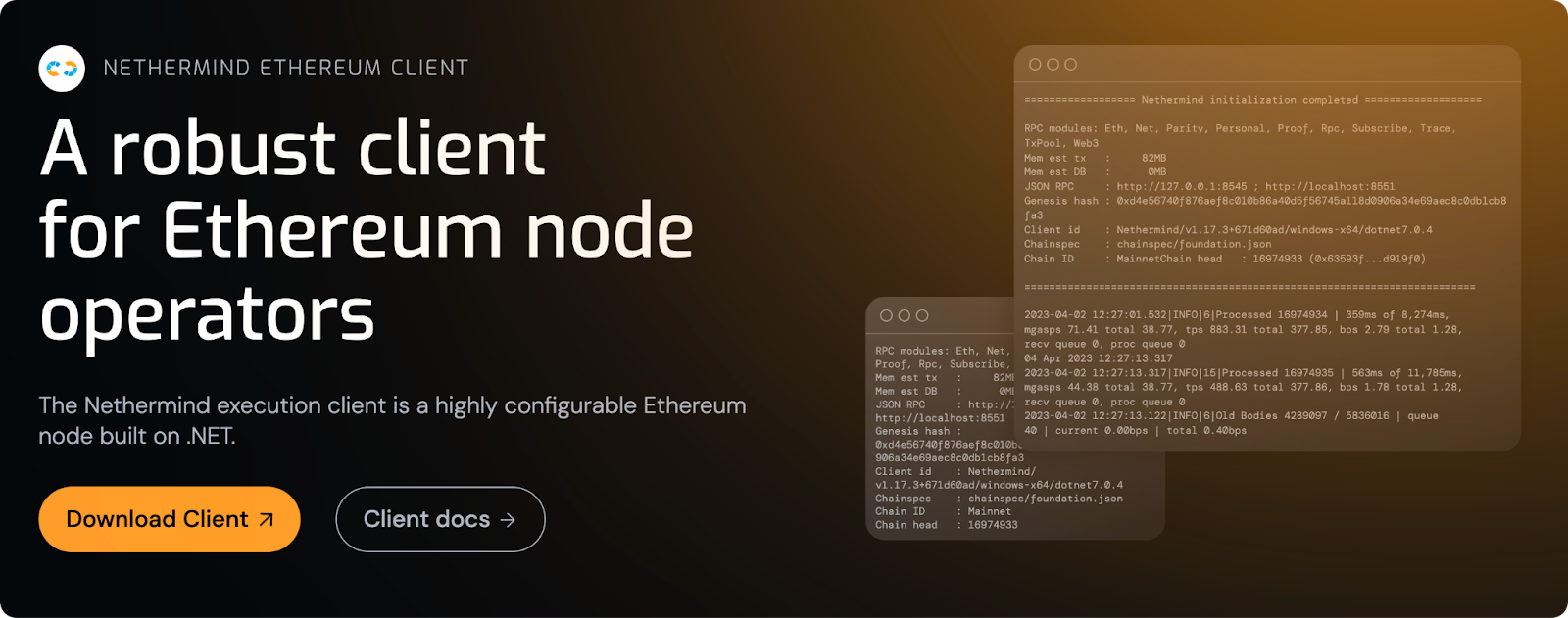
Their flagship product. It's one of several software implementations that validators use to run Ethereum nodes. Having multiple clients for the network isn't redundancy — it's insurance. If one client has a bug and drops, the others step in and keep the network running. Nethermind's version comes built on .NET Core which works across Windows, macOS, and Linux, making it accessible to more operators and supporting Ethereum’s decentralization in the process.
Sedge:
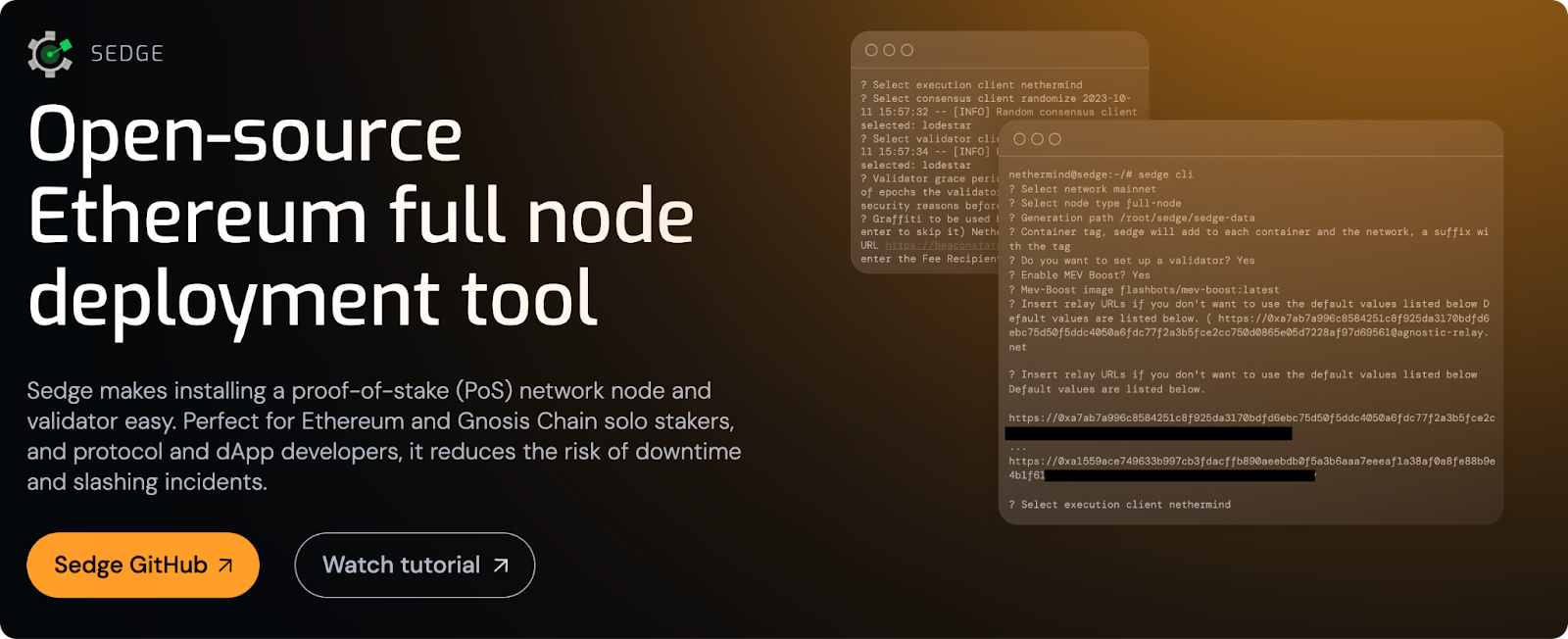
Running an Ethereum validator is notoriously complex — you need to configure multiple pieces of software, secure keys, and keep everything in sync. Sedge turns this into a one-click setup. It also comes integrated with Lido's Community Staking Module, letting anyone easily run a Lido validator as well by putting up ETH as collateral.
Clear:
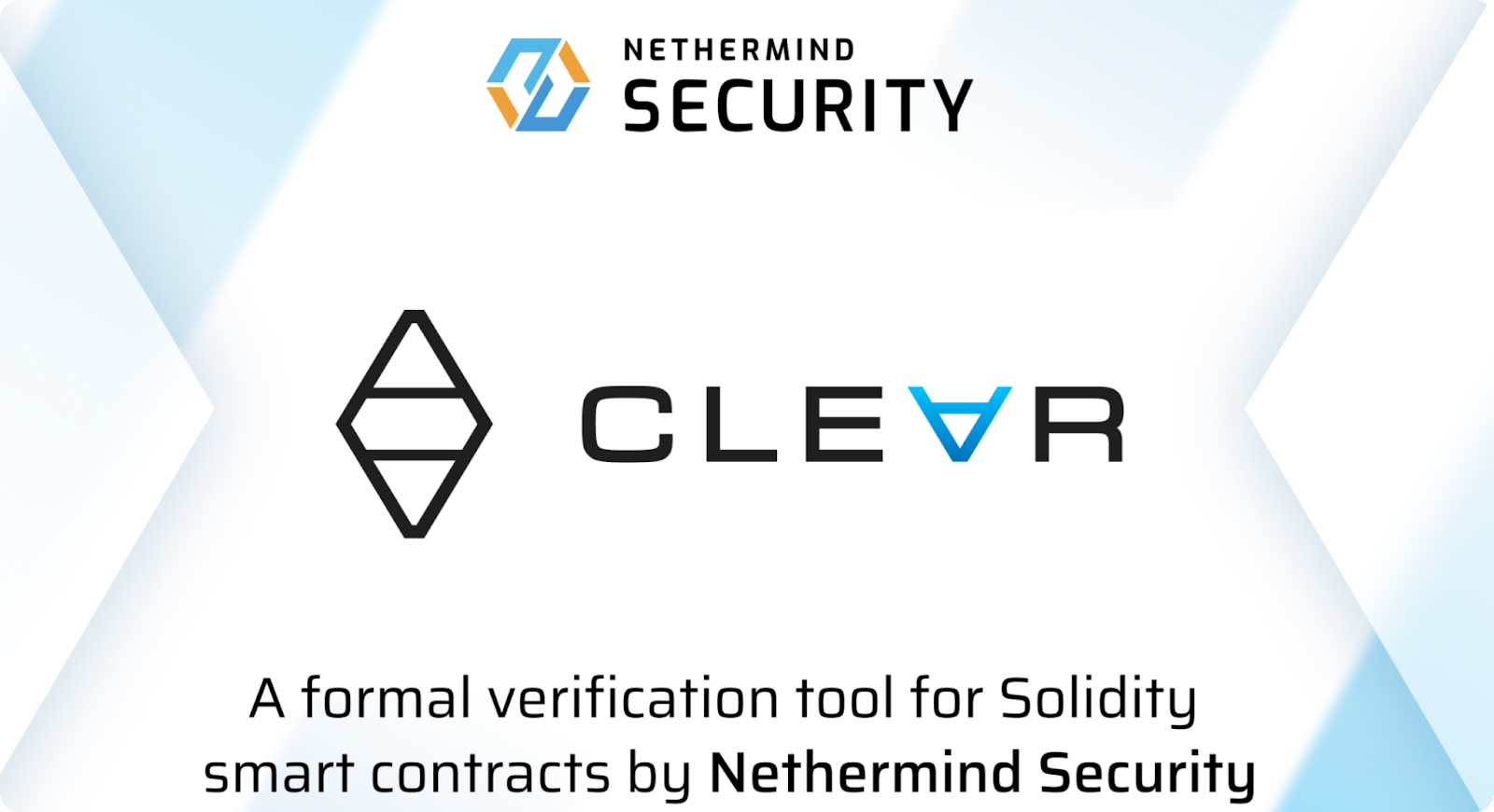
A verification tool that lets developers mathematically prove their smart contracts work as intended. It converts Solidity code into formal proofs, catching bugs that automated tools may miss.
AuditAgent:
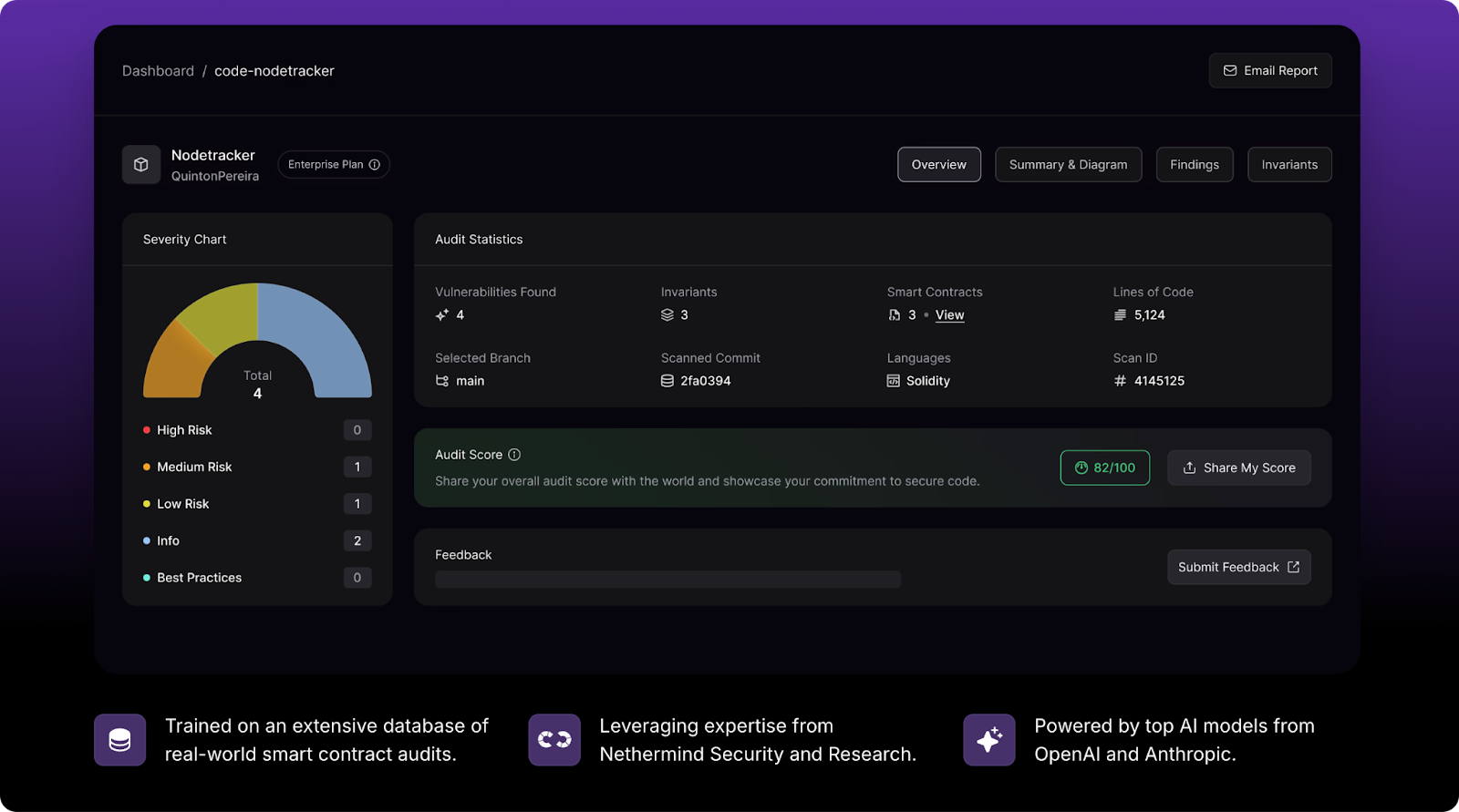
AI-powered tool that audits, as well as continuously scans Ethereum and Starknet smart contracts for threats. It simulates possible attacks and gives real-time feedback, helping devs fix issues both before and after launch. The tool recently gained attention through I.R.I.S, an AI agent built using AuditAgent that launched on Virtuals as their debut Ethereum-based agent. I.R.I.S acts as a 24/7 security assistant — scanning code, monitoring GitHub changes, and watching Twitter conversations for potential vulnerabilities.
Beyond Ethereum, Nethermind's work has become essential infrastructure for Starknet, too:
Juno:
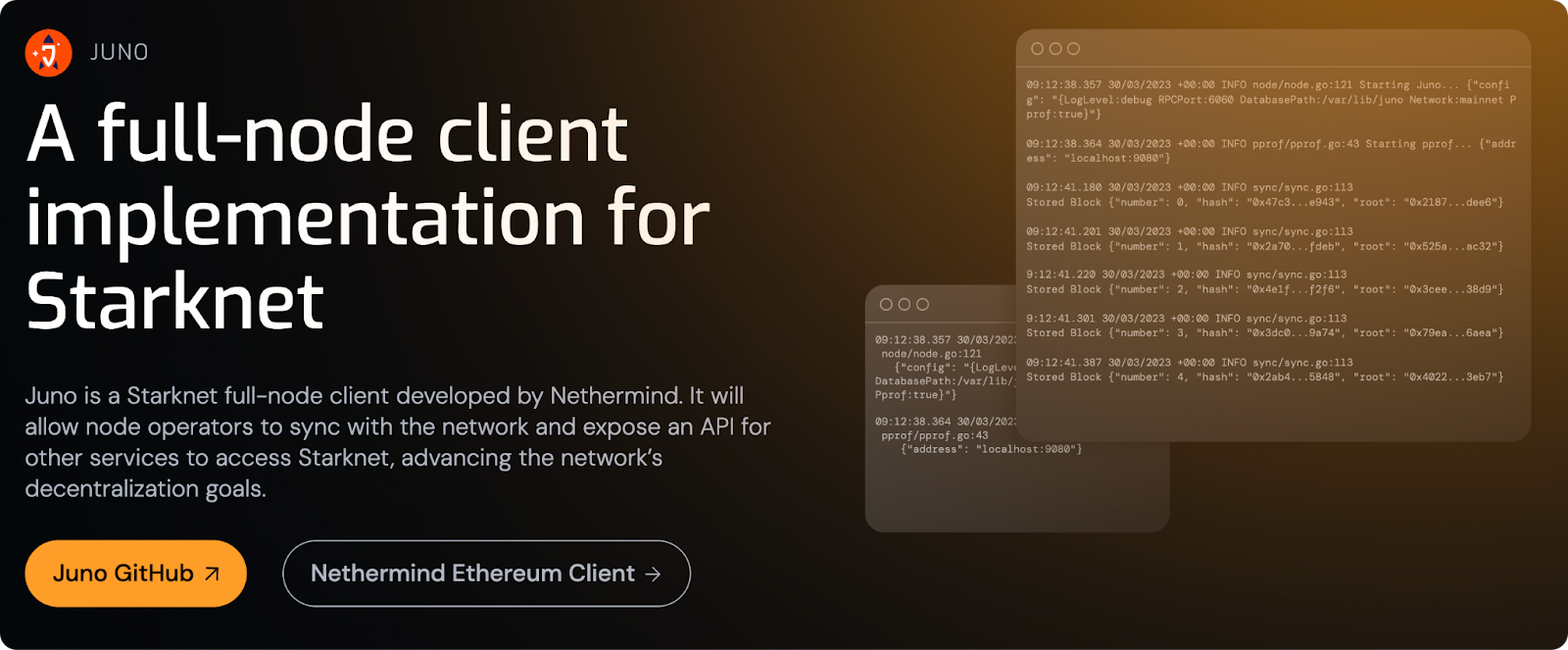
A full node client for Starknet that helps users and developers run their own Starknet nodes, syncing data and maintaining network state, while contributing to Starknet’s decentralization overall. Over time, Juno aims to become a full sequencer — meaning it will help order and process transactions.
Voyager:
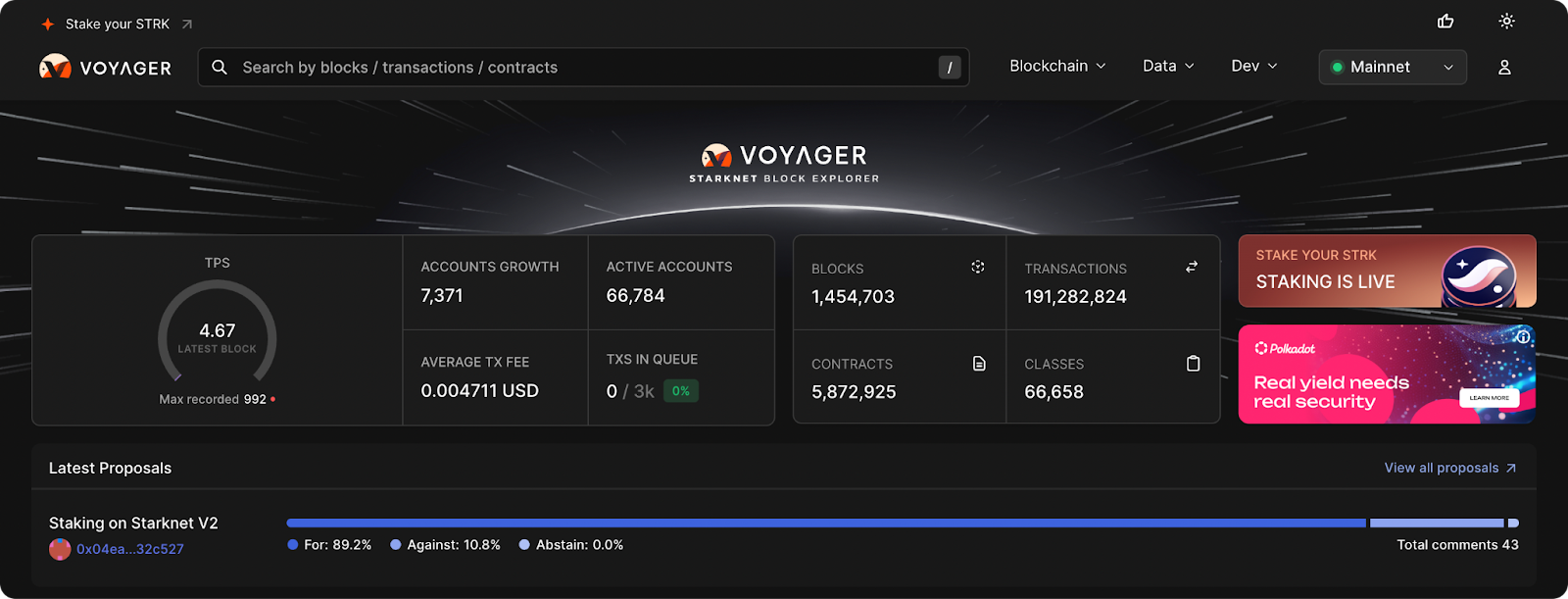
Starknet’s main block explorer, letting users look up addresses, contracts, and overall communications flowing between Ethereum and Starknet. It’s the main tool for seeing what’s happening on Starknet in real time.
Starkweb:
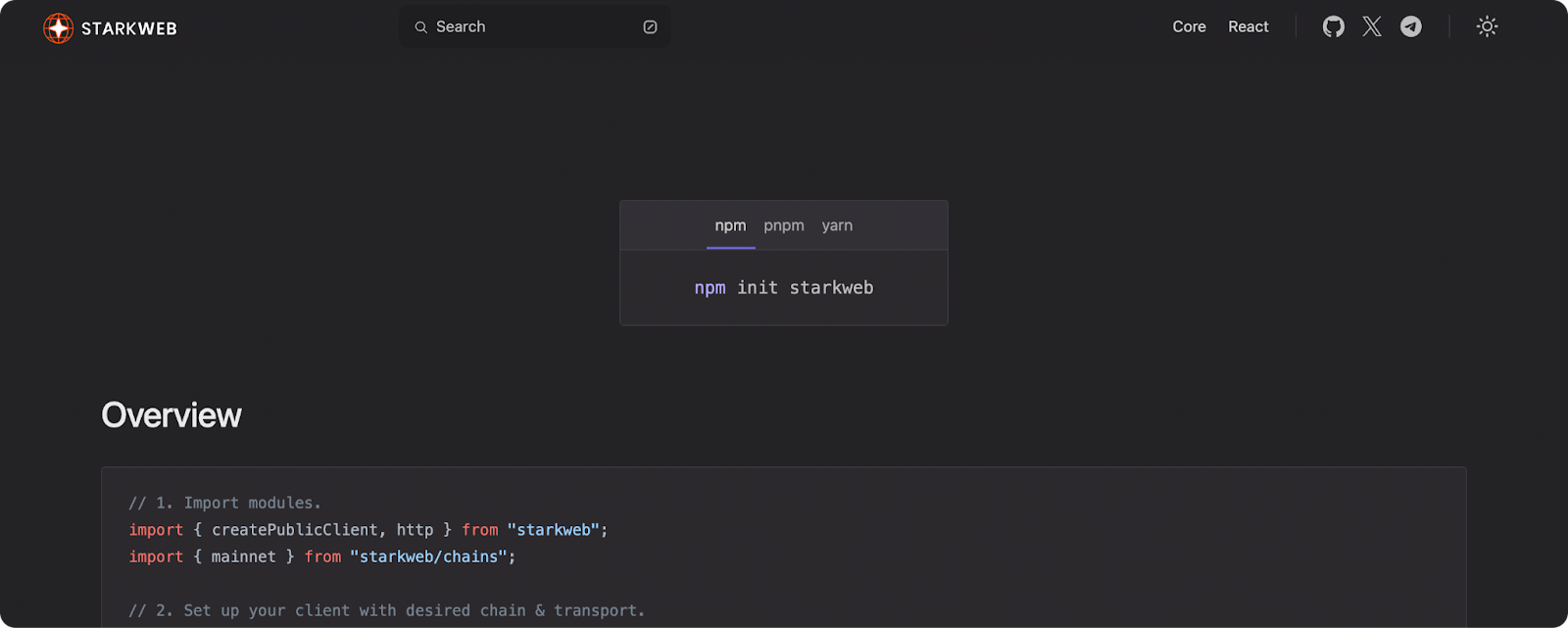
A developer toolkit for building apps on Starknet. It includes templates, testing tools, and web libraries to help turn Cairo smart contracts into usable websites or apps.
Overall, Nethermind’s tools are designed to make every part of operating on Ethereum and Starknet — from running nodes to writing contracts — more decentralized, more secure, and more accessible.
As we move into an era shaped by AI, agent systems, and decentralized networks, Nethermind is building the infrastructure to support it all — from base-layer protocol engineering to advanced zero-knowledge tools. All in all, their work underpins some of the most important parts of Ethereum and Starknet today.
You can follow their latest developments on Twitter at @NethermindEth.